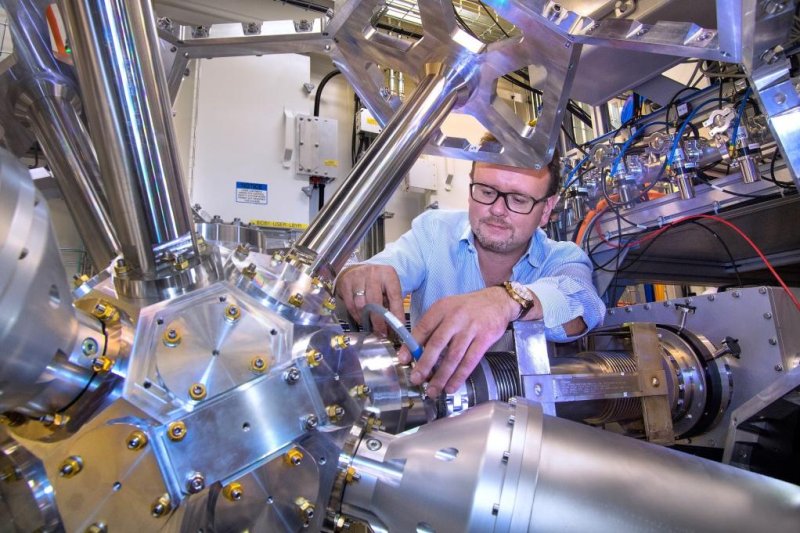1 of 2 | Eli Stavitski, lead scientist at the Inner Shell Spectroscopy beamline at Brookhaven National Laboratory’s National Synchrotron Light Source II, used the powerful tool to probe bismuth’s oxidation states, part of the process developed at Rice University to recycle carbon dioxide to produce pure liquid fuel solutions using electricity. Photo by Brookhaven National Laboratory
Sept. 3 (UPI) -- Engineers at Rice University in Texas have developed a catalytic reactor that can convert CO2 into high concentrations of pure formic acid, which can be used as a liquid fuel.
The technology, described this week in the journal Nature Energy, could inspire a variety of carbon conversion technologies.
Turning CO2 into pure formic acid using commercially available technologies requires a series of costly purification processes. The fuel produced by the new device doesn't need to purified.
"Formic acid is an energy carrier," researcher Haotian Wang, a chemical and biomolecular engineer at Rice, said in a news release. "It's a fuel-cell fuel that can generate electricity and emit carbon dioxide -- which you can grab and recycle again."
As a fuel and resource in the chemical economy, researchers contend formic acid is superior to hydrogen.
"It's also fundamental in the chemical engineering industry as a feedstock for other chemicals, and a storage material for hydrogen that can hold nearly 1,000 times the energy of the same volume of hydrogen gas, which is difficult to compress," Wang said.
The technological breakthrough relies on two main components, a 2D bismuth catalyst and a solid-state electrolyte. The duo eliminated the need for salt in the CO2-to-formic-acid reaction.
"Bismuth is a very heavy atom, compared to transition metals like copper, iron or cobalt," Wang said. "Its mobility is much lower, particularly under reaction conditions. So that stabilizes the catalyst."
Without having to add salts to the reaction process, there's no need to remove the salts at the end, making the conversion process more efficient and cost-effective -- and also easier to scale.
"Currently, people produce catalysts on the milligram or gram scales," said Rice postdoctoral researcher Chuan Xia. "We developed a way to produce them at the kilogram scale. That will make our process easier to scale up for industry."
The development of carbon conversion and carbon reduction technologies is an important part of curbing climate change, Wang and Xia argue.
"The big picture is that carbon dioxide reduction is very important for its effect on global warming as well as for green chemical synthesis," Wang said. "If the electricity comes from renewable sources like the sun or wind, we can create a loop that turns carbon dioxide into something important without emitting more of it."















